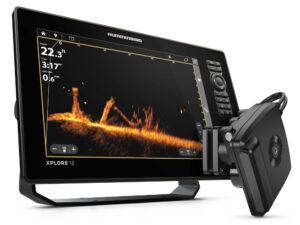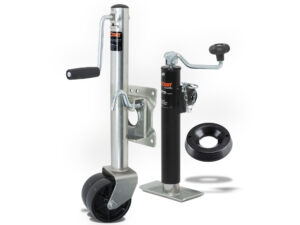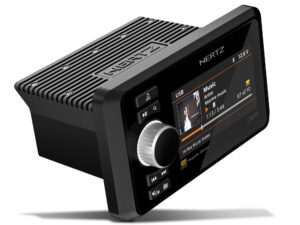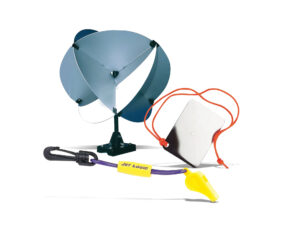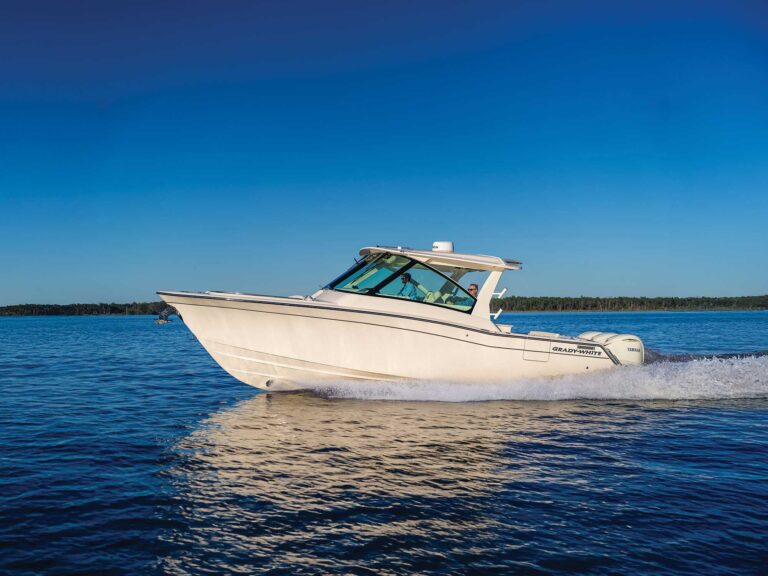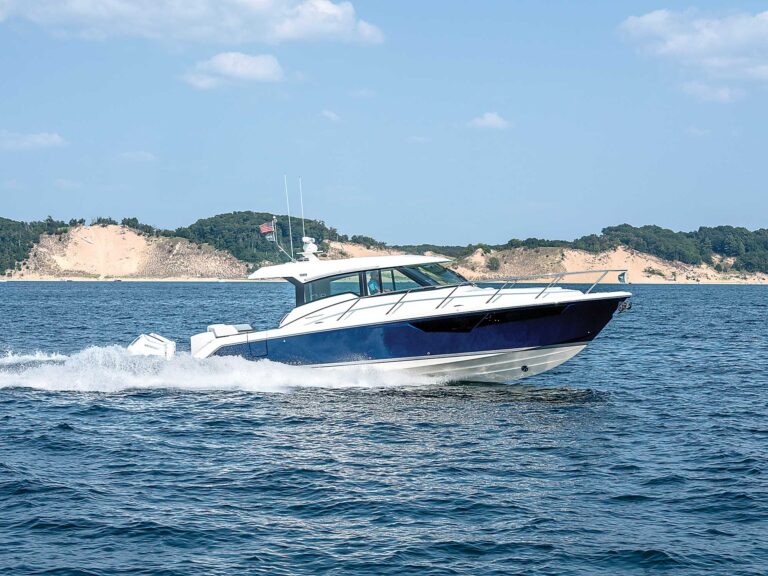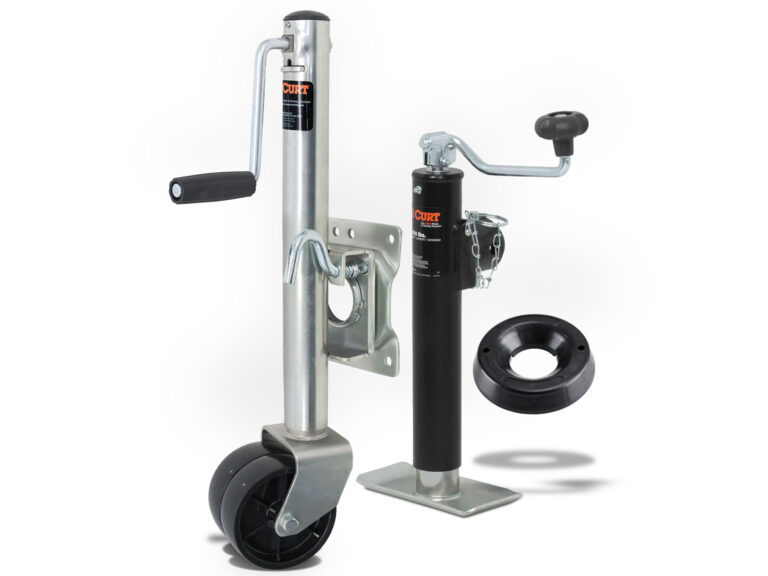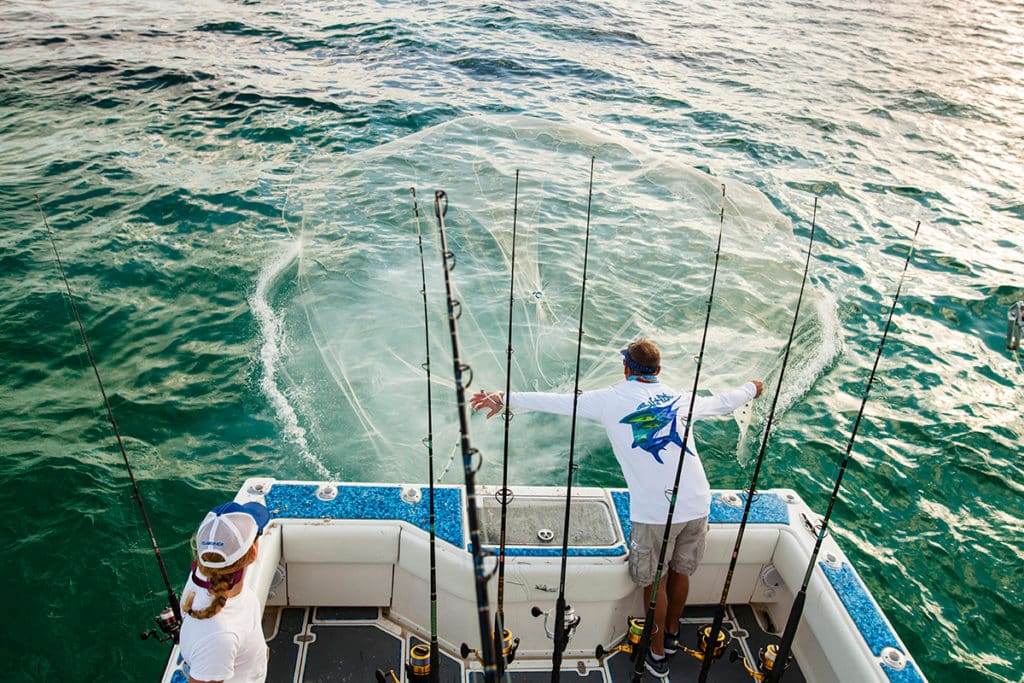
Cast nets introduce you to the world of on-demand fresh bait, allowing you to better control your own piscatorial destiny. Most modern cast nets are manufactured from monofilament and assembled by sewing triangular panels (aka brails) together with a lead line at the bottom to make the net sink, but not all cast nets are created equal. There are hundreds of possibilities, but here’s a basic how-to guideline to get you started.
1. Net Size
Most recreational cast nets are offered in radius sizes from 3 to 10 feet. A 6-foot-radius net will open to 12 feet in diameter if you throw it right. Commercial nets can range to 15 feet in radius, but maximum sizes vary by state, and in some states cast nets are prohibited. A 7-foot net is only marginally larger than a 5-footer but offers over twice the coverage, which allows you to catch more fresh bait with less effort.
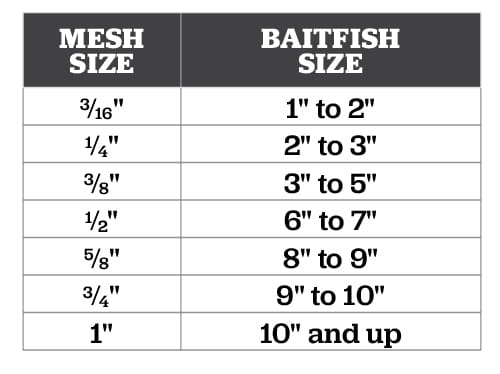
2. Bait Size
The optimum size of the net’s mesh is based on your targeted baitfish. The mesh size that you select should be small enough to avoid “gilling” baitfish, which hastens their demise in the livewell. The chart below serves as a good guideline.
3. Lead Size
Cast nets are typically offered in ¾ pound, 1 pound and 1½ pounds of lead weight per foot of radius. These lead weights are equally spaced at the bottom of the net. The rule of thumb is the more lead and the tighter it’s spaced, the faster the net will sink and the more bait you will catch with each throw. However, a net too heavy to throw catches nothing, so know your strength.
4. Heave Ho
There are dozens of ways to throw a cast net, some of which are determined by its size and weight. There are literally hundreds of videos on YouTube that show some of the nuances, so choose one that works best for you.
5. Easy Storage
There are 101 uses for the ubiquitous 5-gallon bucket on a boat. … Well, make that 102, since this is the perfect container in which to stow your cast net in between engagements. Be sure to give it a freshwater rinse after every use, gently compress the monofilament panels, and feed it lead side first into the bucket, coiling the polyethylene hand line in a neat loop on top.
A quality cast net in the 6- to 8-foot range typically costs less than $100 and should provide many years of service, quickly paying for itself with free fresh bait, bent rods and happy crew members.

